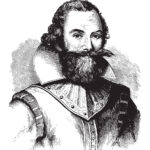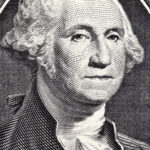 I love to visit Washington D. C. There is so much to see and do. Years ago, Dave worked in the District while the kids and I remained in Norfolk. Each month, we drove up and spent a weekend in his apartment. While the accommodations were cozy for four of us, it was always an adventure. I’ll admit I was charmed by the quaint townhouses and the ability to walk to so many places. But the cost was not possible. These days, I’m not sure I could live with all that craziness for very long.
I love to visit Washington D. C. There is so much to see and do. Years ago, Dave worked in the District while the kids and I remained in Norfolk. Each month, we drove up and spent a weekend in his apartment. While the accommodations were cozy for four of us, it was always an adventure. I’ll admit I was charmed by the quaint townhouses and the ability to walk to so many places. But the cost was not possible. These days, I’m not sure I could live with all that craziness for very long.
Today, living across the river in Maryland, I feel the same way. It is easier to visit from here than that long drive up I-95 from Norfolk, but driving around here is insane. Thank goodness, a Metro stop is not far away.
I love the history and cultural opportunities the District offers, from Celtic Fairs to Christmas Markets, from cherry blossoms to the Monet Experience. This weekend was the Halfway to Halloween Festival. I enjoy it all.
 Last weekend, we took Widgit to explore two local forts nearby on our side of the Potomac River. These were constructed to defend the nation’s capital. As I stared across at Washington, D. C., I decided to write this week’s article on the history of our capital city.
Last weekend, we took Widgit to explore two local forts nearby on our side of the Potomac River. These were constructed to defend the nation’s capital. As I stared across at Washington, D. C., I decided to write this week’s article on the history of our capital city.
Based on archaeological finds along the Anacostia River, the earliest inhabitants of the area date to at least 4,000 years ago. By the time the early European colonists arrived, the Patawomeck, who were affiliated with the Powhatan, and the Doeg tribes, lived on the Virginia side of the Potomac River. In contrast, the Piscataway, or Conoy, lived on the Maryland side. The Nacotchtank, another branch of the Conoy, lived within the present-day boundaries of Washington, D.C.
The early 17th century saw European explorations in the area, including those of Captain John Smith in 1608. By 1662, George Thompson and Thomas Gerrard claimed grants to the Blue Plains tract (modern D. C.) along with other land along the Anacostia. These early settlers clashed with the Natives over grazing rights and land ownership. Most tribes, while settling in specific locations, believed no one owned the land, and there was enough to provide for everyone. However, by 1697, as the Colony of Maryland built forts, Native people, such as the Conoy, began to relocate to the west.
 Towns sprang up, including Alexandria, in the Virginia Colony, established in 1749. Shortly afterward, in 1751, Maryland bought sixty acres of land from George Gordon and George Beall and founded Georgetown. Situated on the fall line, Georgetown was the furthest point upstream, where larger vessels could navigate the Potomac River. Both towns prospered, and wharves, warehouses, tobacco inspection stations, and other buildings were constructed. With the influx of people bringing economic growth, Georgetown University was established in 1780.
Towns sprang up, including Alexandria, in the Virginia Colony, established in 1749. Shortly afterward, in 1751, Maryland bought sixty acres of land from George Gordon and George Beall and founded Georgetown. Situated on the fall line, Georgetown was the furthest point upstream, where larger vessels could navigate the Potomac River. Both towns prospered, and wharves, warehouses, tobacco inspection stations, and other buildings were constructed. With the influx of people bringing economic growth, Georgetown University was established in 1780.
Both the First and Second Continental Congress of the fledgling United States were held in Philadelphia. However, in June 1783, a mob of angry soldiers attacked Independence Hall, demanding their wages for their service during the American Revolution. The governor of Pennsylvania, John Dickinson, was tasked with settling the dispute. However, he agreed with the soldiers, and the Pennsylvania Mutiny of 1783 broke out, forcing Congress to flee to Princeton, New Jersey.
mob of angry soldiers attacked Independence Hall, demanding their wages for their service during the American Revolution. The governor of Pennsylvania, John Dickinson, was tasked with settling the dispute. However, he agreed with the soldiers, and the Pennsylvania Mutiny of 1783 broke out, forcing Congress to flee to Princeton, New Jersey.
On October 6, 1783, Congress formed a committee to investigate a permanent home to house the new government. Elbridge Gerry of Massachusetts suggested either a site on the Delaware River near Trenton or on the Potomac River near Georgetown. Both were deemed suitable towns on navigable rivers. James Madison added further in Federalist No. 43 that the nation’s capital needed to be a separate entity from the states for its maintenance and safety. The selection of the site along the Potomac bordering Maryland and Virginia was agreed upon by Madison, joined by Thomas Jefferson and Alexander Hamilton.
 On December 23, 1788, the Maryland General Assembly ceded land for the new federal district, with Virginia following on July 16, 1790. They defined the area as not to exceed 100 square miles at a point along the Potomac between the Anacostia and Conococheague Creek. President George Washington was authorized to select the actual site. However, Washington wanted to include Alexandria within the boundary. This demand was finally agreed upon in 1791.
On December 23, 1788, the Maryland General Assembly ceded land for the new federal district, with Virginia following on July 16, 1790. They defined the area as not to exceed 100 square miles at a point along the Potomac between the Anacostia and Conococheague Creek. President George Washington was authorized to select the actual site. However, Washington wanted to include Alexandria within the boundary. This demand was finally agreed upon in 1791.
On March 30, 1791, Washington issued a presidential proclamation for Jones’ Point, the upper cape of Hunting Creek, as the starting point for the survey. Soon afterward, surveyors began enclosing a square containing 100 square miles, with each side measuring 10 miles. The axes between the corners ran east-west and north-south.
During this time, President Washington commissioned Pierre L’ Enfant to devise a plan for the new city. His designs included east-west and north-south grid lines with wide diagonal avenues. Where these avenues crossed each other, he placed open spaces for circles and plazas with a grand avenue in the center along an east-west axis. Those avenues were later named after states, and the grand avenue is now the National Mall. A narrower avenue, now Pennsylvania, connected the House of Congress (the Capitol) and the House of the President (the White House).
Modifications were made to L’ Enfant’s plan, and it wasn’t until 1800 that the seat of government moved to the new capital. On February 27, 1801, when the District of Columbia was placed under the jurisdiction of Congress.
In 1807, under fear of retaliation by the British, forts were commissioned to be built surrounding the city in case of attack. One such fort was directly across the Potomac. Completed in 1809, Fort Warburton was ready to guard the capital. However, in 1814, the British landed at the Patuxent River and bypassed the fort completely. They defeated a small force of Americans at Bladensburg and proceeded to burn the capital. Soldiers inside Fort Warburton burned the fort to prevent it from falling into British hands. Within two weeks, construction began on a new fort on the site.  The new Fort Washington was completed in 1824.
The new Fort Washington was completed in 1824.
Over time, the District of Columbia has been at the forefront of many historical events, but that will have to be the topic of future posts. The city has changed little in its overall plan, but now you can enjoy museums, historical sites, and numerous monuments. There are festivals for almost any ethnicity or holiday you can imagine.
I love visiting the District and have many fond memories. Have you been there? What did you enjoy most about your visit?
